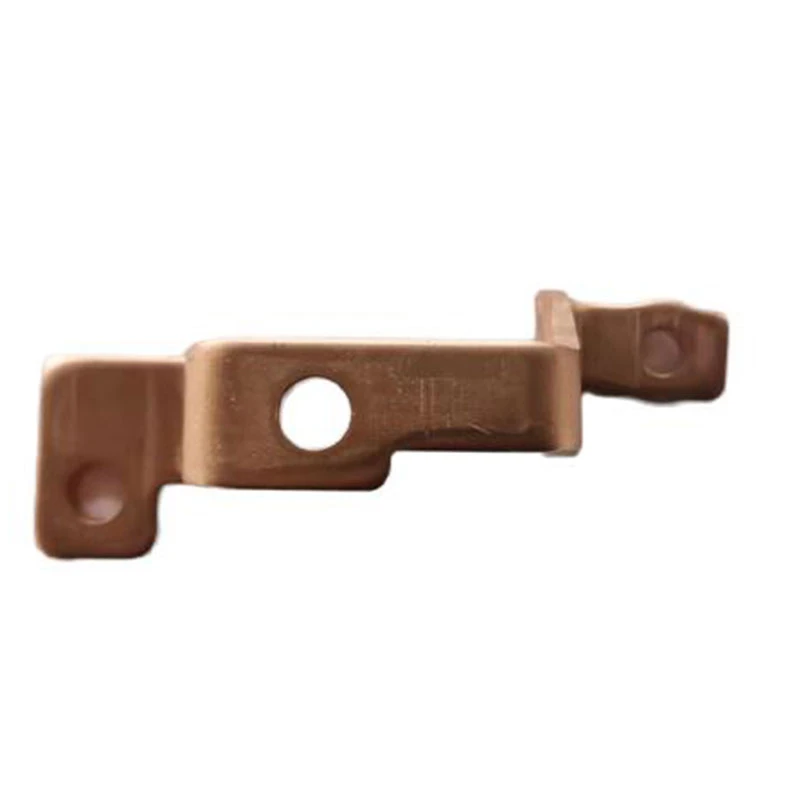Aluminum Billet Casting Techniques for Optimal Quality and Efficiency in Manufacturing
The Aluminum Billet Casting Process An Overview
Aluminum is one of the most widely used metals in today’s manufacturing and industrial sectors, thanks to its lightweight, corrosion-resistant properties and excellent machinability. Among the various forms in which aluminum can be processed, aluminum billets stand out as a versatile product that serves as a primary input in a range of applications, including automotive parts, aerospace components, and structural applications. Understanding the aluminum billet casting process is crucial for manufacturers aiming to optimize the quality and efficiency of their production.
What is Aluminum Billet?
An aluminum billet is a solid cylindrical or rectangular piece of aluminum that is produced through the melting and casting process. These billets serve as the starting point for numerous manufacturing processes, including extrusion and machining. The quality of the billet significantly influences the performance of the final products, making careful attention to the casting process essential.
Steps in the Aluminum Billet Casting Process
1. Melting The process begins with the melting of aluminum scrap or ingots in a furnace, typically capable of reaching temperatures around 700 to 800 degrees Celsius. The melting phase is critical as it transforms solid aluminum into a homogenous molten state. To ensure the purity of the aluminum, various additives and fluxes may be introduced to remove impurities and improve the quality of the melt.
2. Degassing Once melted, the aluminum requires degassing to eliminate hydrogen gas bubbles that could form during the melting process. Excess hydrogen can lead to porosity in the final products. This is often achieved using a process called argon purging or through the addition of degassing agents, which help to capture and remove gas bubbles.
aluminum billet casting process

3. Refining The next stage involves refining the molten aluminum to achieve the desired chemical composition and mechanical properties. Alloying elements may be added at this stage, depending on the specific requirements of the end product. This ensures that the final aluminum billet will possess the characteristics needed for its intended application.
4. Casting Once the aluminum is molten and refined, it is poured into mold cavities to create billets. The casting methods can vary, with direct chill casting being one of the most common. In this method, the molten aluminum is poured into a mold, and chilled by water to solidify quickly, forming a billet that has a fine grain structure and improved strength.
5. Cooling and Solidification After pouring, the aluminum undergoes cooling and solidification. This step is critical, as it can influence the microstructure and properties of the aluminum. A controlled cooling rate helps to achieve uniformity in the grain structure, which in turn affects the mechanical properties of the final products.
6. Extrusion and Cutting Once solidified, the aluminum billet is removed from the mold and may undergo extrusion or cutting processes. Extrusion involves pushing the billet through a shaped opening to create various profiles, while cutting can produce shorter lengths for specific applications.
7. Quality Control Finally, it is essential to conduct quality control measures to inspect the billets for any defects, such as cracks, porosity, or dimensional inaccuracies. This ensures that only the highest quality billets are forwarded for further processing or sale.
Conclusion
The aluminum billet casting process is a sophisticated method that brings together melting, refining, and casting techniques to produce a critical raw material for a variety of industries. By understanding each step of this process, manufacturers can improve their production efficiencies, reduce waste, and enhance the performance of their products. As technology advances, innovations in the casting of aluminum billets continue to evolve, offering opportunities for improved quality and sustainability in manufacturing. The importance of this process cannot be overstated, as it forms the foundation for countless applications that drive modern engineering and design.
-
Precision Casting AI Solution with GPT-4-Turbo | Optimized QualityNewsAug.02,2025
-
Precision Sheet Metal Stamping Manufacturer | Fast & ReliableNewsAug.01,2025
-
OEM Sand Cast Pump Valve Fittings - Baoding Hairun Machinery And Equipment Trading Co., Ltd.NewsAug.01,2025
-
Custom OEM Impellers | High Efficiency & PrecisionNewsAug.01,2025
-
OEM Sand Cast Pump Valve Fittings - Baoding Hairun Machinery | Customization, Quality AssuranceNewsAug.01,2025
-
OEM Sand Cast Pump Valve Fittings - Baoding Hairun Machinery And Equipment Trading Co., Ltd.NewsAug.01,2025















